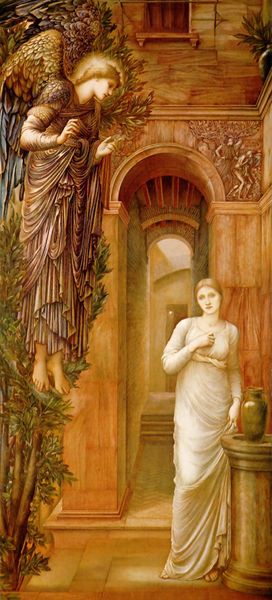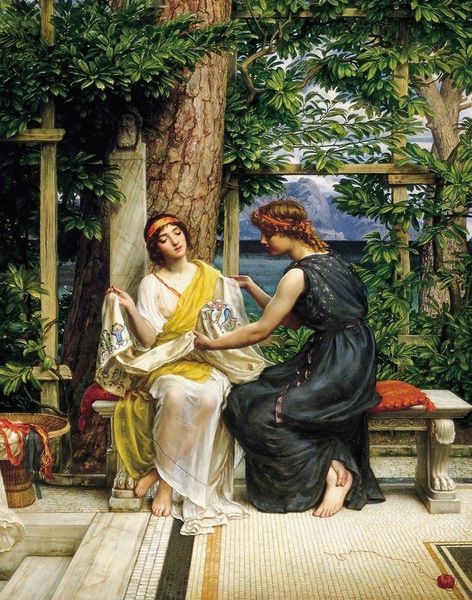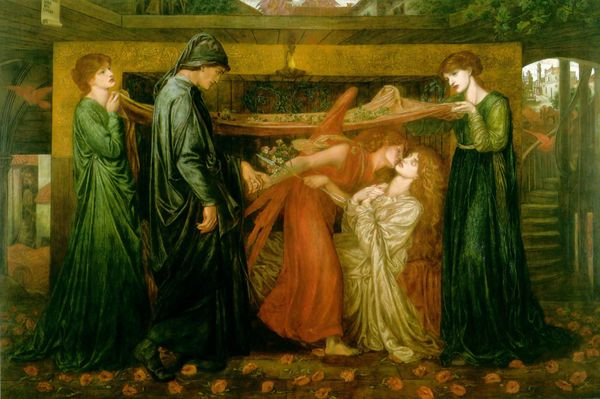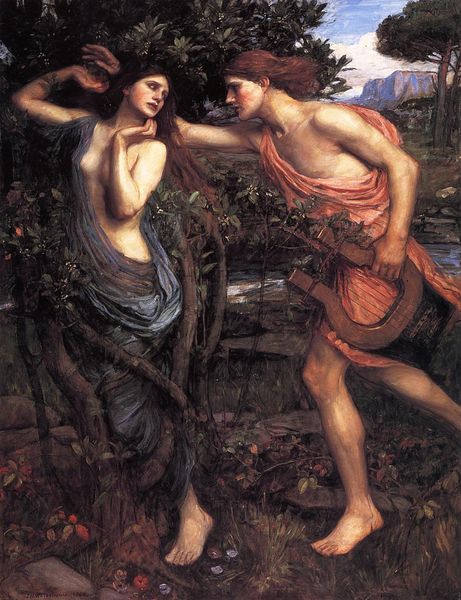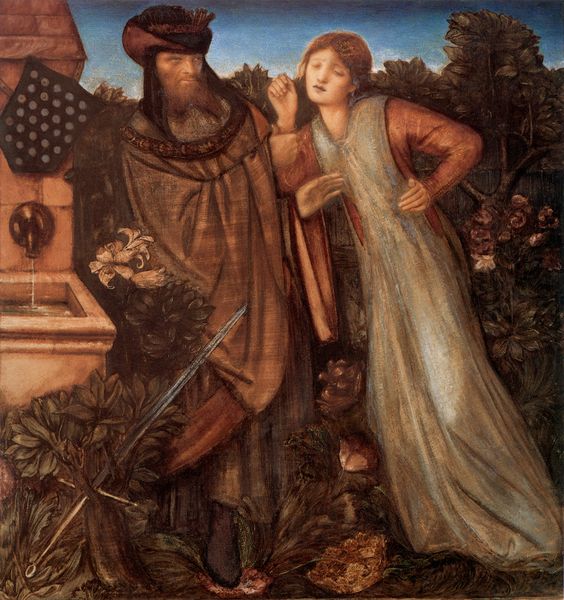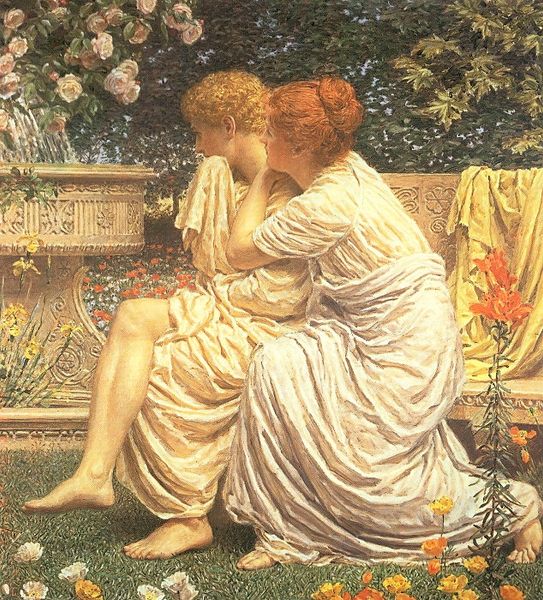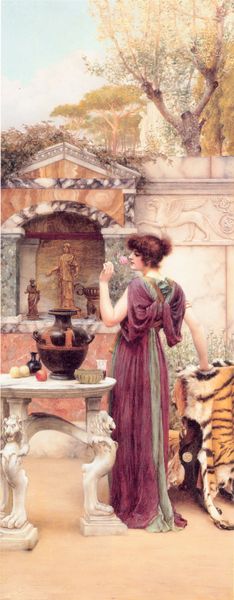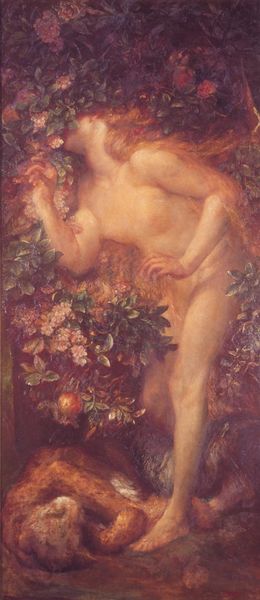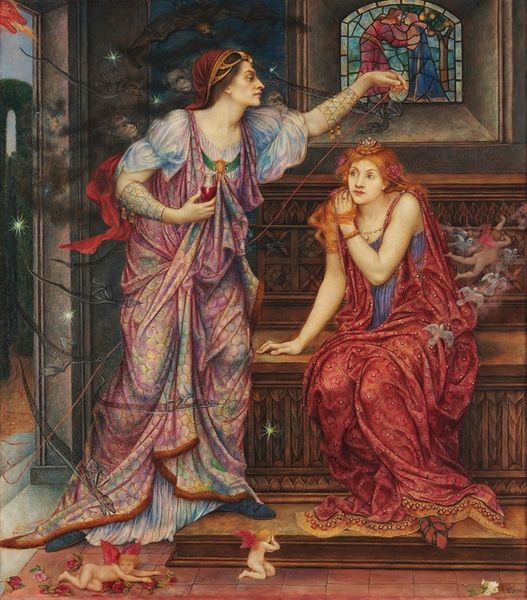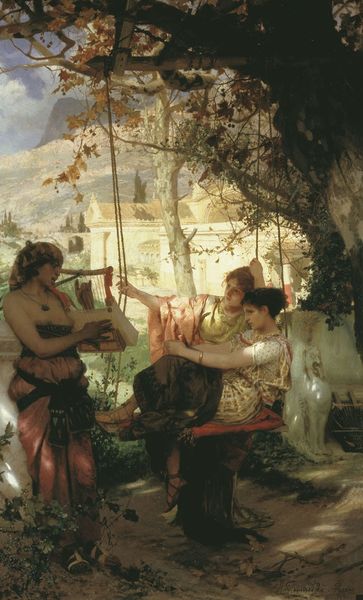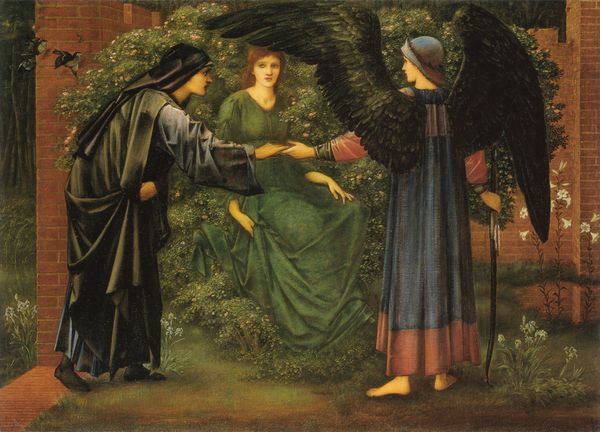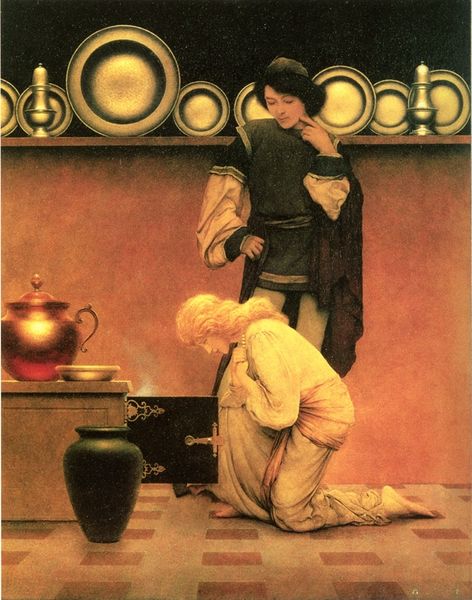
Copyright: Public domain
Curator: Here we have Edward Burne-Jones's 1887 painting, "The Baleful Head," currently housed at the Staatsgalerie Stuttgart. My immediate reaction is that I find it quite haunting. Editor: Haunted, yes, but also so carefully constructed. Look at the arrangement of these figures: Perseus in armor, Andromeda, and another woman, perhaps a nymph, all clustered around this unusual, angular well. Burne-Jones clearly focused on creating distinct textures and contrasts in his manipulation of oil paints. The smooth surfaces of Andromeda's flowing robe juxtaposed with the armor, creating a palpable sense of weight and tension. Curator: Absolutely, the figures draw us into the story. Medusa’s head reflected in the water, Perseus having used his mirrored shield to defeat her – it’s an age-old story about the dangers of looking directly at something too powerful, too terrible. Medusa, often seen as monstrous, is rendered here with a haunting beauty even in death. A poignant reminder of how the monstrous can reside within something outwardly beautiful. Editor: I agree the depiction is powerful, but I can't ignore the setting either. Note the stylized fruit tree heavy with almost luminous apples; the artist made a very conscious choice of how and what to represent, the symbolic material itself laden with meaning and reflecting social expectations in how we understand idealized romance or the heroic narrative. And how that boxy well was made, I wonder if they considered it like a holy well? Curator: Certainly, holy wells have a long history as places of healing, transformation, or connection to the divine, this particular setting contributes to a powerful narrative. The apple tree suggests both temptation and knowledge – a space charged with potent symbolism. Perhaps Perseus wasn't merely slaying a monster, but confronting something deeply embedded within his own psyche, and wider society. Editor: Or even a deeper, perhaps unconscious investigation of the act of producing something so highly stylized. These Pre-Raphaelite paintings are so concerned with form, but the act of forming must also affect content in fundamental ways. And where were these works made, how was this team put together and organized to accomplish such fine details? Curator: That’s a valid point, but for me, I think it really speaks to our relationship with art and history. The cyclical nature of violence and beauty – we are constantly reinterpreting these ancient myths. This painting, like the myth itself, forces us to confront those complex ideas. Editor: Fair enough. Ultimately, I find myself admiring how effectively this painting embodies a particular school’s emphasis on craft, labor, and materials, rather than seeing this work solely for its mythological associations, as captivating as those might be. Curator: And for me, "The Baleful Head" underscores how artists like Burne-Jones tapped into universal anxieties, visualizing archetypes that continue to resonate. It encourages viewers to think more deeply about the image of good versus evil and how even heroes and monsters have their own stories worth considering.
Comments
No comments
Be the first to comment and join the conversation on the ultimate creative platform.
